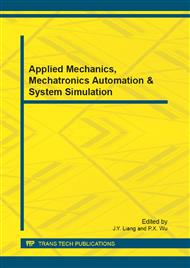p.621
p.626
p.631
p.635
p.639
p.644
p.650
p.656
p.663
Electric Energy Demand Forcasting with GRNN for Energy Saving Strategy
Abstract:
In order to reasonable distribute electric energy and develop an energy-saving plan, electric energy demand forecasting which can represent a fundamental information is necessary. Power consumption has long duration, obvious nonlinear effect and the energy demand may be seen as a temporal series when its data are conveniently arranged. Neural networks have proved to be a very powerful tool which can predict a future value by studying the past one. In this paper, we propose a time series prediction model based on Generalized Regression Neural Network (GRNN) to predict the evolution of the monthly demand of electric consumption. GRNN is trained in just one presentation of the training patterns and is capable of providing fast and accurate results. The performance of the algorithm is evaluated using mean absolute and mean square errors. Tests are carried out by using the power consumption data of a campus distribution subsystem and the results obtained are found to be compatible with the actually data.
Info:
Periodical:
Pages:
639-643
Citation:
Online since:
September 2012
Authors:
Price:
Сopyright:
© 2012 Trans Tech Publications Ltd. All Rights Reserved
Share:
Citation:


